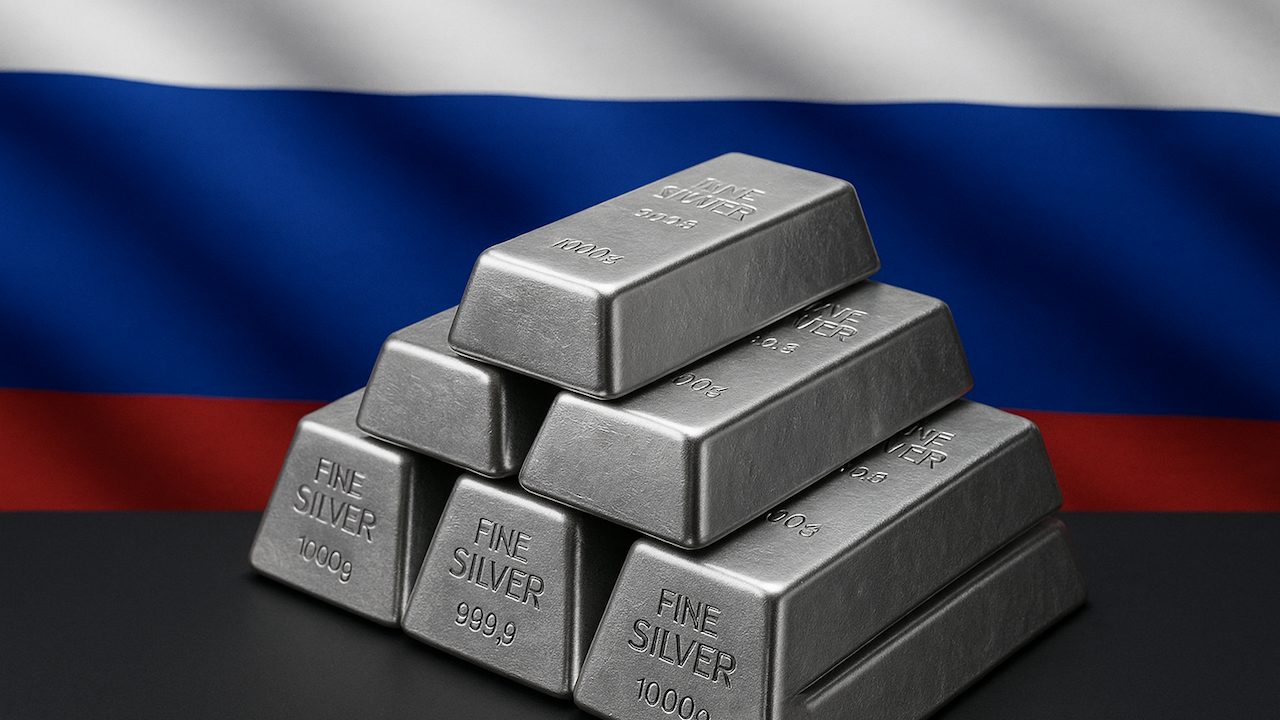(Mike Maharrey, Money Metals News Service) Are undeclared silver purchases by the Russian government boosting the price of silver?
There is some anecdotal evidence that they are.
Silver is up nearly 28 percent this year. It briefly traded above $39 an ounce earlier this week.
Silver has been set up for a rally for quite a while. While it was up 20.5 percent in 2024, most people felt silver underperformed, as it remained well below its all-time highs even as gold set record after record. Even with those gains, the gold-silver ratio grew historically wide, at over 100-1, signifying that silver was significantly underpriced compared to gold.
Silver began to rally last month, and it’s likely not a coincidence that the 2025 Russian budget called for an allocation of 51.5 billion rubles to buy precious metals and gemstones, and the plan indicated that silver would be added to the state fund’s mix of assets for the first time.
While hard data is difficult to come by, especially given the sanctions imposed on the Russian government, it is highly possible that Russian buying is helping boost the silver price.
Writing for Forbes, Australian journalist Tim Treadgold noted that the silver price has outperformed gold ever since Russia made this announcement at the end of September.
“Silver is moving out of a long shadow cast by gold, its precious metal sister, with hints of a major new buyer, Russia’s central bank, starting to influence the silver price, which has risen to a 14-year high.”
The Russian central bank didn’t indicate how much silver it might acquire, and it hasn’t released any new information since the budget came out last fall, but Treadgold said he thinks the central bank has waded into the silver market.
“The relatively strong performance recently by silver compared with gold could be an indication of increasing central bank activity in the silver market.”
Russia could also be stockpiling silver for industrial and military use in an effort to shield itself from supply constraints and volatile prices.
Could Silver Be Re-Monetized?
At one time, silver played an important role in the global economy, but it was gradually demonetized over the course of the 19th and 20th centuries.
In the early 1870s, Germany shifted from silver to gold after unification, and that sparked a global move toward gold. In 1873, the Coinage Act ended the free coinage of silver, putting the U.S. on a path toward a gold standard. In 1965, President Lyndon Johnson removed silver from U.S. coins.
Russia’s decision to include silver in its state fund could prove significant, especially if other countries follow suit. This could even lead to a re-monetization of silver.
When Russia made the announcement, the Jerusalem Post raised an interesting question.
“Gold, once treated with a degree of skepticism by some governments, has become a safe haven asset, particularly in times of economic uncertainty. Could silver follow a similar trajectory?”
Industrial offtake accounts for more than 50 percent of silver demand, but at its core, it is a monetary metal. The Post speculated that “silver’s dual role as both an industrial commodity and a potential financial asset could make it more attractive to governments seeking to hedge against economic volatility.”
Treadgold speculated that Russia’s allies could follow suit.
“If the Russian central bank is quietly building a silver stockpile, as seems to be the case, then it is possible to see other banks aligned to Russia following its lead.”
He specifically mentioned the possibility of the BRICS bloc turning to silver as part of its de-dollarization efforts.
“Part of the BRICS plan is to accumulate gold as they look for a way to bypass the dollar, though with the gold price hovering close to an all-time high, that action has been hugely expensive. Silver, which has always been seen as an alternative to gold, even to the point of acquiring an unkind nickname of the poor man’s gold, might enable members of the BRIC group to push on with their plan to break free of the dollar.”
Of course, this is all speculation. However, it’s certainly plausible and worth consideration.
Regardless, there is no doubt that there is growing interest in silver. Investment demand surged through the first half of 2025, with inflows of silver into ETFs eclipsing the total for the entirety of 2024.
And it appears that there is still plenty of upside. Even with the recent rally in silver, it remains historically underpriced based on both technical and supply-and-demand dynamics.
Mike Maharrey is a journalist and market analyst for Money Metals with over a decade of experience in precious metals. He holds a BS in accounting from the University of Kentucky and a BA in journalism from the University of South Florida.

